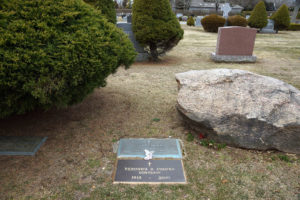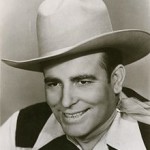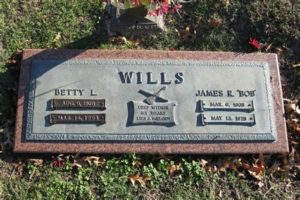 On this day in 1961, Academy Award-winning actor, Coop, Gary Cooper died from cancer at his home in Beverly Hills at the age of 60. Born Frank James Cooper on 7 May 1901 in Helena, Montana. His career comprised more than a 100 films. My favorite movies with Cooper include; as Will Cane in High Noon (1952) with Grace Kelly, as Lou Gehrig in The Pride of the Yankees (1942), as Robert Jordan in the film adaptation of Ernest Hemingway’s For Whom the Bell Tolls (1943) with Ingrid Bergman, as Howard Roark in the film adaptation of Ayn Rand’s The Fountainhead (1949) and as Frank Flannagan in Love in the Afternoon (1957) with Audrey Hepburn. Cooper married once; Veronica “Rocky” Balfe (1933-1961 his death). Cooper allegedly had affairs with famous co-stars Marlene Dietrich, Kelly and Patricia Neal.
On this day in 1961, Academy Award-winning actor, Coop, Gary Cooper died from cancer at his home in Beverly Hills at the age of 60. Born Frank James Cooper on 7 May 1901 in Helena, Montana. His career comprised more than a 100 films. My favorite movies with Cooper include; as Will Cane in High Noon (1952) with Grace Kelly, as Lou Gehrig in The Pride of the Yankees (1942), as Robert Jordan in the film adaptation of Ernest Hemingway’s For Whom the Bell Tolls (1943) with Ingrid Bergman, as Howard Roark in the film adaptation of Ayn Rand’s The Fountainhead (1949) and as Frank Flannagan in Love in the Afternoon (1957) with Audrey Hepburn. Cooper married once; Veronica “Rocky” Balfe (1933-1961 his death). Cooper allegedly had affairs with famous co-stars Marlene Dietrich, Kelly and Patricia Neal.
 The Final Footprint – A requiem mass was held on May 18 at the Church of the Good Shepherd, attended by many of Cooper’s friends, including James Stewart, Henry Hathaway, Joel McCrea, Audrey Hepburn, Jack L. Warner, John Ford, John Wayne, Edward G. Robinson, Frank Sinatra, Dean Martin, Fred Astaire, Randolph Scott, Walter Pidgeon, Bob Hope, and Marlene Dietrich. Cooper was initially interred in the Grotto Section of Holy Cross Catholic Cemetery in Culver City, California. In May 1974 his body was removed from Holy Cross Cemetery, when his widow Veronica remarried and moved to New York, and relocated to Sacred Heart Cemetery, in Southampton, New York, on Long Island. His grave is marked by an individual bronze marker and a three-ton boulder from a Montauk quarry. Veronica was buried next to him when she died in 2000. For his contribution to the film industry, Cooper has a star on the Hollywood Walk of Fame at 6243 Hollywood Blvd. In 1966, he was inducted into the Western Performers Hall of Fame at the National Cowboy & Western Heritage Museum in Oklahoma City, Oklahoma.
The Final Footprint – A requiem mass was held on May 18 at the Church of the Good Shepherd, attended by many of Cooper’s friends, including James Stewart, Henry Hathaway, Joel McCrea, Audrey Hepburn, Jack L. Warner, John Ford, John Wayne, Edward G. Robinson, Frank Sinatra, Dean Martin, Fred Astaire, Randolph Scott, Walter Pidgeon, Bob Hope, and Marlene Dietrich. Cooper was initially interred in the Grotto Section of Holy Cross Catholic Cemetery in Culver City, California. In May 1974 his body was removed from Holy Cross Cemetery, when his widow Veronica remarried and moved to New York, and relocated to Sacred Heart Cemetery, in Southampton, New York, on Long Island. His grave is marked by an individual bronze marker and a three-ton boulder from a Montauk quarry. Veronica was buried next to him when she died in 2000. For his contribution to the film industry, Cooper has a star on the Hollywood Walk of Fame at 6243 Hollywood Blvd. In 1966, he was inducted into the Western Performers Hall of Fame at the National Cowboy & Western Heritage Museum in Oklahoma City, Oklahoma.
 On this day in 1975, musician, songwriter, and bandleader of the Texas Playboys; co-founder of Western Swing, the King of Western Swing, Bob Wills died in Fort Worth, Texas at the age of 70 from a stroke. Born James Robert Wills on a farm near Kosse, Texas on 6 March 1905. Wills formed several bands and played radio stations around the South and West until he formed the Texas Playboys in 1934 with Wills on fiddle, Tommy Duncan on piano and vocals, rhythm guitarist June Whalin, tenor banjoist Johnnie Lee Wills (his brother), and Kermit Whalin, who played steel guitar and bass, later adding Leon McAuliffe on steel guitar, pianist Al Stricklin, drummer Smokey Dacus, and a horn section that expanded the band’s sound. Wills favored jazz-like arrangements and the band found national popularity into the 1940s with such hits as “Steel Guitar Rag”, “New San Antonio Rose”, “Smoke on the Water”, “Stars and Stripes on Iwo Jima”, and “New Spanish Two Step”. In 1950, he had two top ten hits, “Ida Red Likes the Boogie” and “Faded Love”. The Country Music Hall of Fame inducted Wills in 1968 and the Texas State Legislature honored him for his contribution to American music. In 1972, Wills accepted a citation from the American Society of Composers, Authors and Publishers in Nashville. He was recording an album with Merle Haggard in 1973 when a stroke left him comatose until his death in 1975. The Rock and Roll Hall of Fame inducted Wills and the Texas Playboys in 1999. I love to hear Bob holler.
On this day in 1975, musician, songwriter, and bandleader of the Texas Playboys; co-founder of Western Swing, the King of Western Swing, Bob Wills died in Fort Worth, Texas at the age of 70 from a stroke. Born James Robert Wills on a farm near Kosse, Texas on 6 March 1905. Wills formed several bands and played radio stations around the South and West until he formed the Texas Playboys in 1934 with Wills on fiddle, Tommy Duncan on piano and vocals, rhythm guitarist June Whalin, tenor banjoist Johnnie Lee Wills (his brother), and Kermit Whalin, who played steel guitar and bass, later adding Leon McAuliffe on steel guitar, pianist Al Stricklin, drummer Smokey Dacus, and a horn section that expanded the band’s sound. Wills favored jazz-like arrangements and the band found national popularity into the 1940s with such hits as “Steel Guitar Rag”, “New San Antonio Rose”, “Smoke on the Water”, “Stars and Stripes on Iwo Jima”, and “New Spanish Two Step”. In 1950, he had two top ten hits, “Ida Red Likes the Boogie” and “Faded Love”. The Country Music Hall of Fame inducted Wills in 1968 and the Texas State Legislature honored him for his contribution to American music. In 1972, Wills accepted a citation from the American Society of Composers, Authors and Publishers in Nashville. He was recording an album with Merle Haggard in 1973 when a stroke left him comatose until his death in 1975. The Rock and Roll Hall of Fame inducted Wills and the Texas Playboys in 1999. I love to hear Bob holler.
 The Final Footprint – Wills is interred in Memorial Park Cemetery in Tulsa, Oklahoma. His grave is marked by a flat bronze on granite marker.
The Final Footprint – Wills is interred in Memorial Park Cemetery in Tulsa, Oklahoma. His grave is marked by a flat bronze on granite marker.
#RIP #OTD in 2012 bass guitarist (Booker T. & the M.G.’s, session musician for Stax Records), record producer, songwriter, Donald “Duck” Dunn died in his sleep on tour in Tokyo, aged 70. Memorial Park Cemetery, Memphis
 On this day in 2018, actress and activist Margot Kidder died at her home in Livingston, Montana from suicide by alcohol and drug overdose, at the age of 69. Born Margaret Ruth Kidder on October 17, 1948 in Yellowknife, Northwest Territories, Canada. Her accolades include three Canadian Screen Awards and one Daytime Emmy Award. Though she appeared in an array of films and television, Kidder is perhaps best known for her performance as Lois Lane in the Superman film series, appearing in the first four films.
On this day in 2018, actress and activist Margot Kidder died at her home in Livingston, Montana from suicide by alcohol and drug overdose, at the age of 69. Born Margaret Ruth Kidder on October 17, 1948 in Yellowknife, Northwest Territories, Canada. Her accolades include three Canadian Screen Awards and one Daytime Emmy Award. Though she appeared in an array of films and television, Kidder is perhaps best known for her performance as Lois Lane in the Superman film series, appearing in the first four films.
Born to a Canadian mother and an American father, Kidder was raised in the Northwest Territories as well as several other Canadian provinces. She began her acting career in the 1960s appearing in low-budget Canadian films and television series, before landing a lead role in Quackser Fortune Has a Cousin in the Bronx (1970). She then played twins in Brian De Palma’s cult thriller Sisters (1973), a sorority student in the slasher film Black Christmas (1974) and the titular character’s girlfriend in the drama The Great Waldo Pepper (1975), opposite Robert Redford. In 1977, she was cast as Lois Lane in Richard Donner’s Superman (1978), a role which established her as a mainstream actress. Her performance as Kathy Lutz in the blockbuster horror film The Amityville Horror (1979) gained her further mainstream exposure, after which she went on to reprise her role as Lois Lane in Superman II, III, and IV (1980–1987). She was also photographed by Douglas Kirkland for the March 1975 issue of Playboy, accompanied by an article written by Kidder herself.
In 2005, Kidder became a naturalized U.S. citizen. She was an outspoken political, environmental and anti-war activist, and continued to participate in political and activist causes through the end of her life.
She co-starred with Peter Fonda in 92 in the Shade (1975), a drama directed by novelist Thomas McGuane, based on his own book. While filming, Kidder became romantically involved with McGuane, and in March 1975 relocated with him to Livingston, Montana. Kidder and McGuane married in August 1976, but the marriage ended in divorce on July 21, 1977.
On August 25, 1979, she married actor John Heard, but the couple separated six days into their marriage. Their divorce was finalized on December 26, 1980.
Kidder produced and starred in the French-Canadian period television film Louisiana (1984) as a plantation owner in the American South who returns from Paris to find her estate and holdings have been lost. Kidder began dating the film’s director, Philippe de Broca, and the two married in France in 1983. Her marriage to de Broca lasted one year, ending in divorce in 1984.
The Final Footprint
Kidder was cremated and her cremains were scattered.
 On this day in 2019, actress, singer, and animal welfare activist Doris Day died in Carmel Valley Village, California at the age of 97. Born Doris Mary Anne Kappelhoff on April 3, 1922 in Cincinnati, Ohio. She began her career as a big band singer in 1939, achieving commercial success in 1945 with two No. 1 recordings, “Sentimental Journey” and “My Dreams Are Getting Better All the Time” with Les Brown & His Band of Renown. She left Brown to embark on a solo career and recorded more than 650 songs from 1947 to 1967.
On this day in 2019, actress, singer, and animal welfare activist Doris Day died in Carmel Valley Village, California at the age of 97. Born Doris Mary Anne Kappelhoff on April 3, 1922 in Cincinnati, Ohio. She began her career as a big band singer in 1939, achieving commercial success in 1945 with two No. 1 recordings, “Sentimental Journey” and “My Dreams Are Getting Better All the Time” with Les Brown & His Band of Renown. She left Brown to embark on a solo career and recorded more than 650 songs from 1947 to 1967.
Day’s film career began during the latter part of the Golden Age of Hollywood with the film Romance on the High Seas (1948), leading to a 20-year career as a motion picture actress. She starred in films of many genres, including musicals, comedies, dramas, and thrillers. She played the title role in Calamity Jane (1953) and starred in Alfred Hitchcock’s The Man Who Knew Too Much (1956) with James Stewart. Perhaps her best-known films are those in which she co-starred with Rock Hudson, chief among them 1959’s Pillow Talk, for which she was nominated for the Academy Award for Best Actress. She also worked with James Garner on both Move Over, Darling (1963) and The Thrill of It All (1963), and starred alongside Clark Gable, Cary Grant, James Cagney, David Niven, Jack Lemmon, Frank Sinatra, Richard Widmark, Kirk Douglas, Lauren Bacall, and Rod Taylor in various movies. After ending her film career in 1968, only briefly removed from the height of her popularity, she starred in her own sitcom The Doris Day Show (1968–1973).
In 2011, she released her 29th studio album My Heart which contained new material and became a UK Top 10 album. She received the Grammy Lifetime Achievement Award and a Legend Award from the Society of Singers. She was given the Cecil B. DeMille Award for lifetime achievement in motion pictures in 1989. In 2004, she was awarded the Presidential Medal of Freedom; this was followed in 2011 by the Los Angeles Film Critics Association’s Career Achievement Award.
Day was married four times. From March 1941 to February 1943, she was married to trombonist Al Jorden, a violent schizophrenic who later took his own life, whom she met in Barney Rapp’s Band. They had a son Terrence Paul “Terry” Jorden (1942–2004). When Doris refused to have an abortion, he beat her in an attempt to force a miscarriage.
Her second marriage was to George William Weidler from March 30, 1946, to May 31, 1949, a saxophonist and the brother of actress Virginia Weidler. Weidler and Day met again several years later during a brief reconciliation, and he introduced her to Christian Science.
Day married American film producer Martin Melcher on April 3, 1951, her 29th birthday, and this marriage lasted until he died in April 1968. Melcher adopted Day’s son Terry, who became a successful musician and record producer under the name Terry Melcher. Martin Melcher produced many of Day’s movies. They were both Christian Scientists, resulting in her not seeing a doctor for some time for symptoms which suggested cancer.
Day’s fourth marriage was to Barry Comden (1935–2009) from April 14, 1976, until April 2, 1982. He was the maître d’hôtel at one of Day’s favorite restaurants. He knew of her great love of dogs and endeared himself to her by giving her a bag of meat scraps and bones on her way out of the restaurant. He later complained that she cared more for her “animal friends” than she did for him.
The Final Footprint
Her death was announced by her charity, the Doris Day Animal Foundation. Per Day’s requests, the Foundation announced that there would be no funeral services, grave marker, or other public memorials. She was cremated and her cremated remains were scattered.
Have you planned yours yet?
Follow TFF on twitter @RIPPTFF

